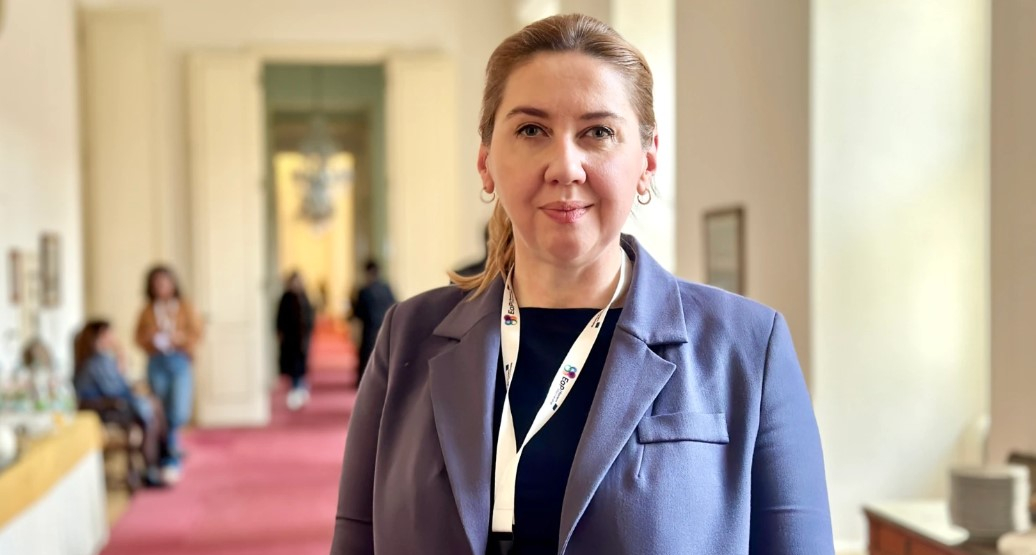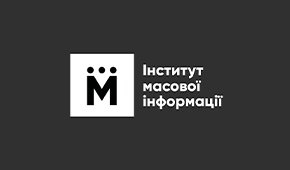IMI director: Journalists follow regulations, it is Telegram channels that are a threat

IMI director Oksana Romaniuk, photo by Serhiy Stetsenko / Radio Liberty
When covering Russian shelling, journalists adhere to regulations, standards, and are public; Telegram channels pose a much greater threat, said Oksana Romaniuk, director of the Institute of Mass Information, on the air of Espresso TV, commenting on a video about journalists called “One news story — one strike”, which was released earlier by several state institutions.
“As far as I understand, this cartoon is part of an information security series produced by a state-owned company. With several state bodies involved in the production. It is very odd that it never even occurred to any of the parties involved in this process that accusing the entire journalist community is a grave mistake both in terms of communication and in view of the facts. As a representative of a media organization that records, among other things, violations by the journalist community, I can say responsibly: there have been no cases of Ukrainian journalists causing any missile strikes in a very long time,” she said.
Oksana Romaniuk added that accessing any military facilities or high-security enterprises is extremely difficult now. A journalist will not be able to just come in from the street and film anything.
She gave an example of Kharkiv journalists, who agreed among themselves to wait three hours after the shelling and only then report on the impact. “In the meantime, let's look at Telegram channels. There was a mass shelling strike on Dnipro city yesterday (April 16. – Ed.), and anonymous Telegram channels were posting the aftermath of the strike from all angles literally 40 seconds later,” she said.
The director of the Institute of Mass Information emphasized that journalists adhere to standards and are transparent and public, unlike anonymous Telegram channels.
“I believe that Telegram channels pose a much more serious threat – an incomparably greater threat, in fact. Journalists adhere to rules, standards, ethics, they work openly and publicly. Each of us can be sued, right? Our faces are well-known, our contacts can be found on websites, and everyone has the opportunity to defend their rights. With Telegram channels, this is impossible. It is just some kind of black hole of anonymity. If some information is leaked there, everyone turns a blind eye to it for some reason. In fact, I would like to see a video about the real danger of Telegram channels. After all, Telegram servers are located on the territory of the Russian Federation. And this poses a huge threat to our information security. But for some reason, the blame is being put on journalists again,” stressed Oksana Romaniuk.
Previously
Earlier, several state institutions released an animated video produced by the Centre for Strategic Communications and Information Security, which implies that journalists are to blame for Russian shelling strikes.
The video features the motto “One news story – one strike.” In shows a reporter in front of a drone manufacturing facility, openly talking about it on camera and saying, “Hundreds of drones are produced here monthly.” An employee of the factory also says on camera that the company has doubled its capacity and that the new batch will soon be shipped off to the frontline. The video cuts to Russian intelligence officers who watched the news story and sent the coordinates of the facility to their general staff in preparation for the next strike.
Then, a missile hits the building and a fire truck drives by. Another reporter in the frame, standing next to the destroyed building, says that there was a “ballistic strike, hospitals are overloaded.” The journalist is shown without a bulletproof vest or a helmet and is reporting supposedly live from the site.
Ihor Solovey, the head of the Centre for Strategic Communications and Information Security, said in a comment to IMI representative Valentyna Troyan that the Center had produced this video jointly with the Ukrainian Armed Forces. When asked whether the authors of the video or people who commissioned it think that the video misrepresents the work of the media in covering the activities of the defense sector and reporting from shelling sites, Ihor Solovey emphasized that they do not.
He says the video is exclusively educational and aims to draw the attention of all citizens, including service members, to the issue of information security in wartime.
The General Staff later announced that the video would be revised.
The video has since been taken down from the social media pages of the UAF General Staff, the UAF Communications HQ, the Ministry of Defense, and the Strategic Communications Centre.
Help us be even more cool!

